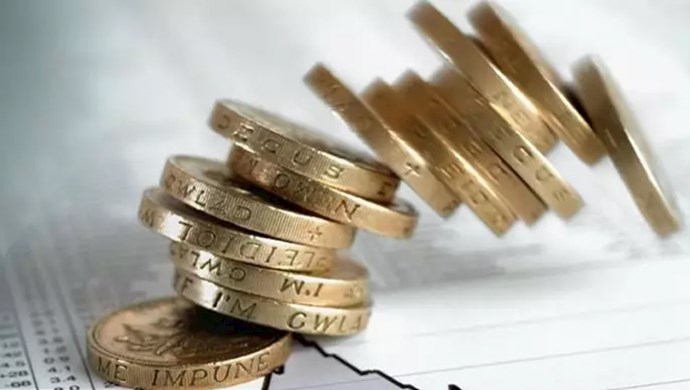Analysis by PMOI/MEK
Iran, October 14, 2021—Iran is the only country in the world that has had double-digit inflation rates for more than four decades, economic experts believe. leading to the rapid spread of poverty and the destruction of economic and social structures.
"Economic statistics have gone beyond catastrophe," according to the state-run Hamdeli daily on October 10.
"According to the latest Central Bank report, the volume of liquidity exceeded 39,000 trillion rials (about $140 billion). This figure indicates a 40 percent increase in liquidity over the past year,” an October 10 report by the state-run Vatanemrooz daily reads in part regarding Iran’s liquidity increase.
This amount of liquidity has pushed up the prices of items that people need, and many food items such as red meat, chicken, and even eggs and milk and other dairy products have become too expensive for many across the country.
Regarding the role of the government in increasing inflation, the state-run newspaper Donya-e-Eqtesad ran a piece that reads in part: "The significant and sharp monetary base growth in the 12 months leading to the mid-summer of this year is rooted in the government's unhealthy and inflationary financing. These measures impose its costs on the society in the form of high inflation, which has shown itself in above 40- percent inflation in recent months."
"The president of the Home Appliance Traders' Union recently said: In the current circumstances, the minimum amount required to buy an Iranian refrigerator is 240 to 250 million rials (about $860 to $893), and Iranian-made stoves on the market are priced above 70 million rials (about $250). In such circumstances, people will not be able to buy Iranian-made home appliances,” according to an October 10 report by the state-run Hamdeli daily.
Rampant inflation, on the other hand, has made it impossible for poor people to rent a house.
An article titled "How much has rent become more expensive recently?" the state-run Hamdeli daily reads "According to statistics, house rents have risen 24.7 percent this summer compared to the same period last year, and households that have extended rents witnessed a 46.9 percent rise in their expenditure."
In addition to the role of liquidity and other economic problems in increasing inflation and high prices, government-linked firms also play a major role in skyrocketing prices.
The state-run Setaresobh daily published an article title “Corporations compete to rise prices” reading part: " According to the Iran Statistics Center, the price of 40 basic goods have increased by 100 percent since last year. Among household items, vegetable oil holds the record with 141 percent. Carrots by 140 percent, soda drinks vy 132 percent, pasteurized butter by 121 percent, cream by 120 percent, chicken by 119 percent, and chickpeas by 112 percent rank second to seventh, respectively. According to the published table, milk by 83 percent, by with 82 percent, by 81 percent, foreign rice and canned fish with 79 percent, salmon, buttermilk and eggs by 77 percent each are in the next ranks. Cheese by 74 percent, mushrooms by 71 percent, foreign tea by 69 percent and cobs by 67 percent are among the other important items that have had the highest price increases in the past year. Half of Iran's markets are owned exclusively by one or more companies, and these companies have impacted small businesses by creating rents."
"General inflation and corporations’ competition over prices, currency fluctuations and national currency depreciation are the most important reasons behind the rise prices of the people’s basic commodities,” said government expert Ali Ghanbari on October 10, expert, according to the Setaresobh daily on October 10.
The fact is that in order to deal with this critical situation, the government must first stop printing unsupported banknotes, divert loose capital to production, which has become very difficult and even impossible.
In the current situation, the country's production has been destroyed, and part of the reason for all this loose capital in the country is that there is no reason to use it in production.
Stabilizing the foreign exchange market is also one of the ways to prevent the rise of inflation, in a situation where the government deliberately raises the price of foreign exchange in order to compensate for the budget deficit.
Earlier, Mahmoud Vaezi, former President Hassan Rouhani’s chief of staff, acknowledged that the government was raising the exchange rate dramatically in order to cover spending and budget deficits.
"Economically, Iran's exchange rate is not 250 or 2700 thousand rials (each dollar now is about 280,000 rials). We took such measures so we could manage the country's economy so that today the enemies would say that the maximum pressure has failed!" according to the semi-official ISNA news agency on February 27, 2020.
Since the cause of this critical situation is the corrupt regime, it neither wants nor can correct the status quo. The reality is that fighting corruption in a regime whose supreme leader is the epitome of corruption is a joke.
The regime has milked the country and the people out of their last rials, and today, the public has nothing to lose. This is the reason behind continued protests across the country despite the regime’s repression, the spread of coronavirus, and dozens of other issues. The regime is playing with duplicitous claims about fighting corruption. And it is only a matter of time before the contraption it has created blows up in its own face.





